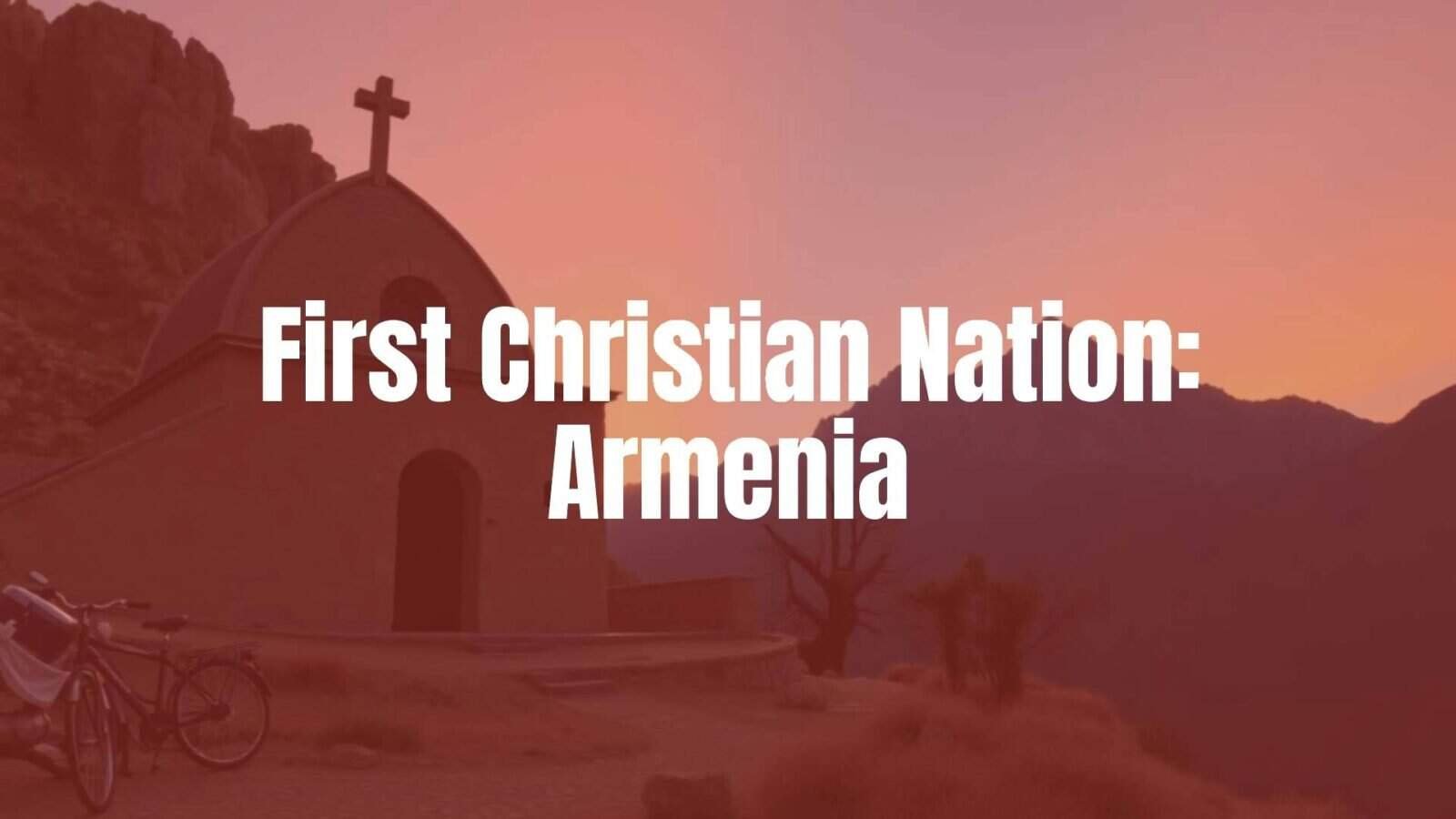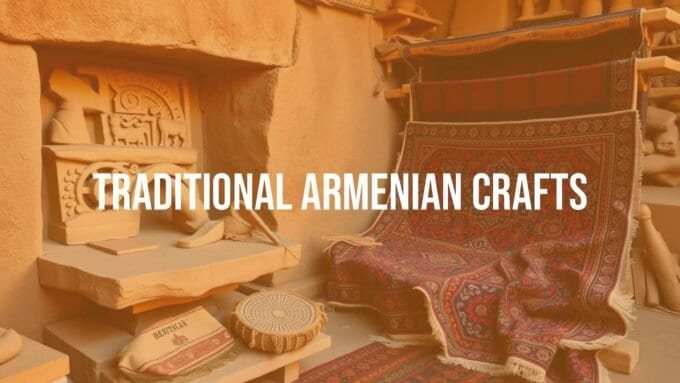Armenia is widely known as the first country to officially adopt Christianity as its state religion. This key step, usually dated to 301 AD, shaped the nation’s identity, culture, and future in lasting ways. The story of Armenia’s conversion blends history, legend, and faith, and it still matters to Armenians today.

Why Is Armenia Known as the First Christian Nation?
Armenia was the first independent state to make Christianity its official religion. While Christian groups existed elsewhere, no other kingdom had made such a public and formal choice at that time. This happened decades before the Roman Empire recognized Christianity, so Armenia led the way.
This change made Christianity the guiding idea for the whole kingdom. It affected laws, customs, and national life. From early on, faith and nation grew together, giving Armenians a shared base that helped them face many trials over the centuries.
What Makes Armenia Unique in Christian History?
Several things set Armenia apart:
- Early date: Armenia’s conversion came very early and from the top down, which became a model for state-backed Christianity.
- Independent church: The Armenian Apostolic Church formed its own path, keeping its own teachings and worship style.
- Faith and survival: Christianity helped Armenians hold their ground against stronger neighbors, especially the Zoroastrian Persian Empire, and it shaped a strong national character.
When Did Armenia Officially Adopt Christianity?
The most accepted date is 301 AD, and Armenia marked the 1700th anniversary in 2001. Some scholars suggest dates from 284 AD to as late as 325 AD. One view says King Tiridates III may have accepted the faith in private around 301, with a public move after the Edict of Milan in 313 AD. No matter the exact year, early in the fourth century marks the big change.
Key Figures and Events in Armenia’s Conversion to Christianity
The main figures are Saint Gregory the Illuminator and King Tiridates III. Their story includes suffering, healing, and a shared faith that set the base for Armenia’s Christian life. The accounts include both history and legend, and together they show a country going through a deep change.
Much of what we know comes from fifth-century works linked to Agathangelos. These writings mix fact with saintly stories to show the spiritual meaning of these events. They describe the king and his court turning to Christianity and a wider shift across society.
Who Was Gregory the Illuminator?
Saint Gregory the Illuminator (about 240-332 AD) is honored as the patron saint and first head of the Armenian Church. He was the son of Anak the Parthian, who killed King Khosrov II, father of King Tiridates III. To escape revenge, Gregory grew up in Caesarea in Cappadocia among Christians, learned the faith, and accepted it.
When he returned to Armenia, Gregory tried to serve King Tiridates III. He refused to worship the goddess Anahit, so he was tortured and thrown into the pit of Khor Virap near Artaxata for thirteen or fifteen years. He survived against all odds and later was freed. His faith and the events around his release made him a key figure in Armenian history.
How Did King Tiridates III Influence the Adoption of Christianity?
King Tiridates III (about 250-330 AD) first opposed Christians, following the line of the Roman emperor Diocletian. He worked to strengthen Armenia against Sasanian Persian pressure. According to tradition, after he ordered the killing of Christian nuns, including Saint Hripsime, he fell very ill and, in legend, even turned into a wild boar.
When no pagan priests could help, his sister Khosrovidukht had a vision telling them to free Gregory from Khor Virap. Gregory healed the king, who then accepted the faith. As king, he made Christianity the state religion in 301 AD and began baptizing the court, the army, and the people. This happened about ten years before Constantine’s conversion, giving Armenia a special place in Christian history.

Traditional Accounts Versus Historical Evidence
Agathangelos’s “History of the Armenians” and “The Teaching of St. Gregory” mix real events with later saintly stories. Scholars agree that parts, like the boar story, are symbolic rather than historical.
Even so, other sources back the main points: Gregory and his line led the early Armenian Church; he was likely made a bishop in Caesarea around 314 AD; and Christianity spread quickly with royal support. The exact dates may be debated, but the main idea stands: Armenia, led by King Tiridates III and Saint Gregory, was the first state to adopt Christianity in the early fourth century.
Role of Miraculous Legends in Armenia’s Christianization
Stories of miracles played an important role. The tale of the king’s illness and Gregory’s healing showed the power of the new faith and Gregory’s standing. Such stories helped people accept Christianity and see it as stronger than older beliefs.
These accounts also helped people connect with the change on a personal level. They showed God’s action, the win of Christian belief over pagan ways, and Gregory’s holiness. In a time when many expected signs and wonders, these stories made the shift to Christianity feel closer and more real.
How Did Christianity Spread in Early Armenia?
The spread of Christianity took time. The royal act in 301 AD was major, but earlier seeds had already been planted, and the full change came slowly. The shift meant leaving long-held pagan customs and fitting the new faith into Armenia’s social and political life.
Growth came both from royal support and from local holy men. A major boost came in the fifth century with the Armenian alphabet, which opened the way for people to read the Bible and worship texts in their own language.
Pre-Christian Religious Landscape in Armenia
Before Christianity, Armenia had mixed religious traditions. A form of Zoroastrianism, likely from the Achaemenid period, blended with local beliefs. People honored many gods and goddesses linked to nature, wisdom, and fertility.
Temples stood across the land, like the Garni Temple, a rare survivor from that time. Rituals and festivals were part of daily life. The move to Christianity meant a deep change, and some people and nobles resisted because they saw the new faith as a threat to old ways.

Greek and Syriac Influences in the Fourth Century
Two streams shaped early Armenian Christianity. One came from the south through Syria and Mesopotamia (Syriac). The other came later from the west through Asia Minor (Greek). Both streams left a clear mark.
Early teaching and worship often used Greek and Syriac, so only those who knew these languages could fully follow. Armenian borrowed basic church words like “priest” and “monk” from Syriac, and words for higher offices like “bishop” and “catholicos” from Greek. This shows how both traditions helped build the Armenian Church.
Christianization of Armenian Society and Culture
The change in daily life took generations. The Church used existing social and political networks, took over lands linked to old temples, and raised churches on the same spots to mark the new faith.
When Mesrop Mashtots created the Armenian alphabet around 405 AD, it was a big step. People could read the Bible, the liturgy, and early Christian writings in Armenian. This helped form a clear Armenian Christian identity. Even with pushback at times and Persian attempts to bring back Zoroastrianism, Christianity and Armenian identity grew tightly linked, helping the culture survive under foreign rule.
Formation and Importance of the Armenian Apostolic Church
The Armenian Apostolic Church shows Armenia’s early lead in Christian history. Its growth moved with the fortunes of the nation. It became both a spiritual guide and a keeper of Armenian identity. From the start, it set its own course with teachings and worship that mark it out in the wider Christian community.
The Church did more than guide prayer. It helped hold the nation together, especially when the state was weak or divided. Its steady role shows how much Armenia’s early choice still matters.
Structure and Beliefs of the Armenian Apostolic Church
The Armenian Apostolic Church is an independent Oriental Orthodox church and the national church of Armenia. A Catholicos leads it, and the Catholicos of Ejmiadzin is seen as “Supreme Patriarch and Catholicos of All Armenians.” Other sees include the Catholicosate of Cilicia (in Antelias, Lebanon) and patriarchates in Constantinople (Istanbul) and Jerusalem. They honor Ejmiadzin’s lead while keeping some local control.
The Church teaches Miaphysitism: in Christ, divinity and humanity are united in one nature. This differs from Chalcedonian churches (Roman Catholic and Eastern Orthodox), which teach two natures, and from Monophysite views, which say only one divine nature. The Church’s worship, practices, and traditions reflect many centuries of faith and culture.

How Did the Armenian Church Develop Independence?
The path to independence began early. Gregory the Illuminator was consecrated in Caesarea, a Greek center, and at first Armenian patriarchs went there for consecration, under its nominal authority. Over time, this link faded.
After Patriarch Nerses I the Great was killed in 373/4 AD, Caesarea refused to consecrate his successor. Along with the political division of Armenia, this pushed the Church to stand on its own (autocephaly). By the late fourth century, Armenian patriarchs stopped seeking consecration in Caesarea. The Church also did not attend councils after Nicaea and later declined the Council of Chalcedon’s rulings in 506 AD. This made its teachings and leadership clearly separate from Rome and Constantinople and allowed a church life suited to the Armenian people.
What Is the Impact of Becoming the First Christian Nation?
Becoming the first Christian nation changed Armenia’s politics, society, and culture in lasting ways. It reset ties with powerful neighbors and shaped how Armenians saw themselves as a people. This choice brought strength in hard times but also brought conflict with rivals who followed other faiths.
Christianity grew into more than a set of beliefs. It became a key part of Armenian survival and identity, giving unity and hope when the state was under pressure or lost.
Political and Social Effects on Armenia
Politically, the choice moved Armenia away from the Iranian sphere, which was mostly Zoroastrian, and closer to the Christian Roman Empire, though that relationship could be complicated. King Tiridates III also wanted a clearer identity to resist Persian control.
Socially, the faith reached all levels over time. While the start came from the top, the Armenian alphabet and translations into Armenian sped up the spread. The Church gained land and influence, and its leaders often played an important role in public life. This built a shared identity based on faith, which was key for keeping Armenian culture alive, especially when political freedom was lost.
Christian Identity During Periods of Persecution and Suffering
Armenia’s Christian identity has been a sign of strength through many trials. Because Armenia embraced Christianity early, it often stood alone against empires with other faiths, like Zoroastrian Persia and later Islamic powers. In these times, the Church guarded language, customs, and a sense of peoplehood.
Faith offered hope and unity. Stories of endurance, such as Gregory’s long imprisonment, inspired people. The Church held the community together and protected culture when the state could not, showing how closely faith and national life fit together for Armenians.
Christianity in Armenia Today
Today, Christianity still plays a central role in Armenia. The title of first Christian nation is more than a historical note; it shapes daily life and public celebrations. While most people are Christian, Armenia also respects smaller religious groups.
The Armenian Apostolic Church remains the main church for most Armenians. It influences family life, art, holidays, and public events. Visitors can see sincere faith across the country.
Demographics and Modern Religious Distribution
Most people in Armenia belong to the Armenian Apostolic Church. The 2022 census reports that 95.2% identify with it. Other groups also live and worship in Armenia.
| Religion/Group | Share of population (2022) |
|---|---|
| Armenian Apostolic Church | 95.2% |
| Catholic (Latin + Armenian Catholic) | 0.60% |
| Evangelical | 0.50% |
| Yazidi | 0.50% |
| Eastern Orthodox | 0.20% |
| Jehovah’s Witnesses | 0.20% |
| None/refused | 2.20% |
| Other | 0.60% |
Other Christian Denominations in Armenia
Armenia also has other Christian groups. The Catholic Church includes Latin parishes and the Armenian Catholic Church, which uses the Armenian Rite and is in communion with Rome. In 2022, there were 17,884 Catholics (0.6%).
Evangelical churches count 15,836 followers (0.5%), helped by Protestant missions after the Soviet era. Eastern Orthodox Christians-mostly Russians, Ukrainians, Georgians, and Greeks-number about 6,316 (0.2%), with a community centered at the Church of the Intercession of the Holy Mother of God in Yerevan. Smaller groups include Jehovah’s Witnesses and Mormons. So while the Armenian Apostolic Church is central, Armenia’s Christian life also includes other traditions.
Legacy and Global Significance of Armenia’s Christian Heritage
Armenia’s place as the first Christian nation matters beyond its borders. This long history shaped the Armenian people and also added to Christian culture worldwide. The steady keeping of the faith, even in hard times, is a clear sign of the power of belief.
From church design to the life of diaspora communities, Armenia’s Christian story continues to guide and inspire. It shows faith, survival, and rich culture, and it gives Armenia a strong voice in global Christian conversations.
Cultural and Architectural Contributions
Armenia’s land is filled with ancient churches and monasteries, many on UNESCO’s list. These sites, often on mountain tops or built into rock, are both places of worship and symbols of national art and identity. Key examples include:
- Etchmiadzin Cathedral, often called the oldest cathedral in the world
- Tatev Monastery
- Geghard Monastery
- Khor Virap
Across the countryside, “khachkars” (cross-stones) show the blend of faith and art in countless carved designs. The Armenian alphabet was created to translate Scripture, launching a rich literary life that still continues. Faith and creativity grew side by side, leaving a lasting cultural treasure.

Influence on Diaspora and International Recognition
Armenia’s first Christian nation status shapes its global diaspora. Armenian churches abroad keep language, customs, and identity alive. Church halls and centers act as hubs for community life across continents.
Armenia’s Christian past also brings international respect and special ties with other Christian bodies. The Armenian Church takes part in talks with Roman Catholic and Eastern Orthodox churches to heal old divides. Saint Gregory the Illuminator is honored beyond Armenia; for example, Pope John Paul II placed his statue in Vatican City, showing how Armenia’s early choice still speaks to the wider Christian family.















Leave a comment